A spring launches a \(4 \, \text{kg}\) block across a frictionless horizontal surface. The block then ascends a \(30^\circ\) incline with a kinetic friction coefficient of \(\mu_k = 0.25\), stopping after \(55 \, \text{m}\) on the incline. If the spring constant is \(800 \, \text{N/m}\), find the initial compression of the spring. Disregard friction while in contact with the spring.
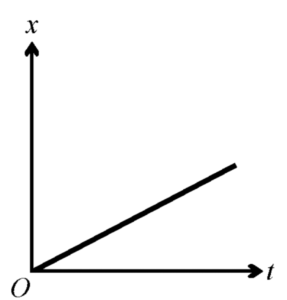 The displacement \(x\) of an object moving in one dimension is shown above as a function of time \(t\). The velocity of this object must be
The displacement \(x\) of an object moving in one dimension is shown above as a function of time \(t\). The velocity of this object must be
A train is moving to the right at \( 20 \) \( \text{m/s} \). A passenger on the train throws a ball horizontally to the left at \( 5 \) \( \text{m/s} \) (relative to the train).
A \(6 \, \text{kg}\) cube rests against a compressed spring with a force constant of \(1{,}800 \, \text{N/m}\), initially compressed by \(0.3 \, \text{m}\). Upon release, the cube slides on a horizontal surface with a kinetic friction coefficient of \(\mu_k = 0.12\) for \(3 \, \text{m}\), then ascends a \(12^\circ\) slope, stopping after \(4.5 \, \text{m}\). Determine the coefficient of kinetic friction on the slope.
A block with a mass of \( 4 \) \( \text{kg} \) is attached to a spring on the wall that oscillates back and forth with a frequency of \( 4 \) \( \text{Hz} \) and an amplitude of \( 3 \) \( \text{m} \). What would the frequency be if the block were replaced by one with one‑fourth the mass and the amplitude of the block is increased to \( 9 \) \( \text{m} \)?
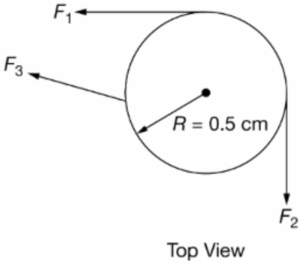
A disk of radius \( R = 0.5 \) \( \text{cm} \) rests on a flat, horizontal surface such that frictional forces are considered to be negligible. Three forces of unknown magnitude are exerted on the edge of the disk, as shown in the figure. Which of the following lists the essential measuring devices that, when used together, are needed to determine the change in angular momentum of the disk after a known time of \( 5.0 \) \( \text{s} \)?
Consider a uniform hoop of radius \( R \) and mass \( M \) rolling without slipping. Which is larger, its translational kinetic energy or its rotational kinetic energy? Hint: The moment of inertia of a uniform hoop is \(I = M R^2\)
You drive \( 4 \) \( \text{km} \) at \( 30 \) \( \text{km/h} \) and then another \( 4 \) \( \text{km} \) at \( 50 \) \( \text{km/h} \). What is your average speed for the whole \( 8 \) \( \text{km} \) trip?

Four identical lead balls with large mass are connected by rigid but very light rods in the square configuration shown in the preceding figure. The balls are rotated about the three labeled axes. Which of the following correctly ranks the rotational inertia \(I\) of the balls about each axis?
A pool cue ball, mass \(0.7 \, \text{kg}\), is traveling at \(2 \, \text{m/s}\) when it collides head-on with another ball, mass \(0.5 \, \text{kg}\), traveling in the opposite direction with a speed of \(1.2 \, \text{m/s}\). After the collision, the cue ball travels in the opposite direction at \(0.3 \, \text{m/s}\). What is the velocity of the other ball?
A rescue helicopter lifts a 79 kg person straight up by means of a cable. The person has an upward acceleration of 0.70 m/s2 and is lifted through a distance of 11 m.

A horizontal tube with two vertical T-branches (A and B) is partially submerged in a liquid, with the open ends of the branches exposed to the air. However, the section of the tube above point B is hidden from view and may either be wider or narrower than the section above A.
Air is blown through the horizontal tube, causing the liquid levels in the vertical branches to rise as shown. Based on the observed water levels, which of the following best describes the characteristics of the hidden section of the tube above B?
By continuing you (1) agree to our Terms of Use and Terms of Sale and (2) consent to sharing your IP and browser information used by this site’s security protocols as outlined in our Privacy Policy.
Quick Start Guide
AP physics 1, AP C, honors and advanced physics students.
Quickly filter questions by units and more.


Here’s guide to using 5 UBQ filters.
GQ = general question, MCQ = multiple choice, FRQ = free response.

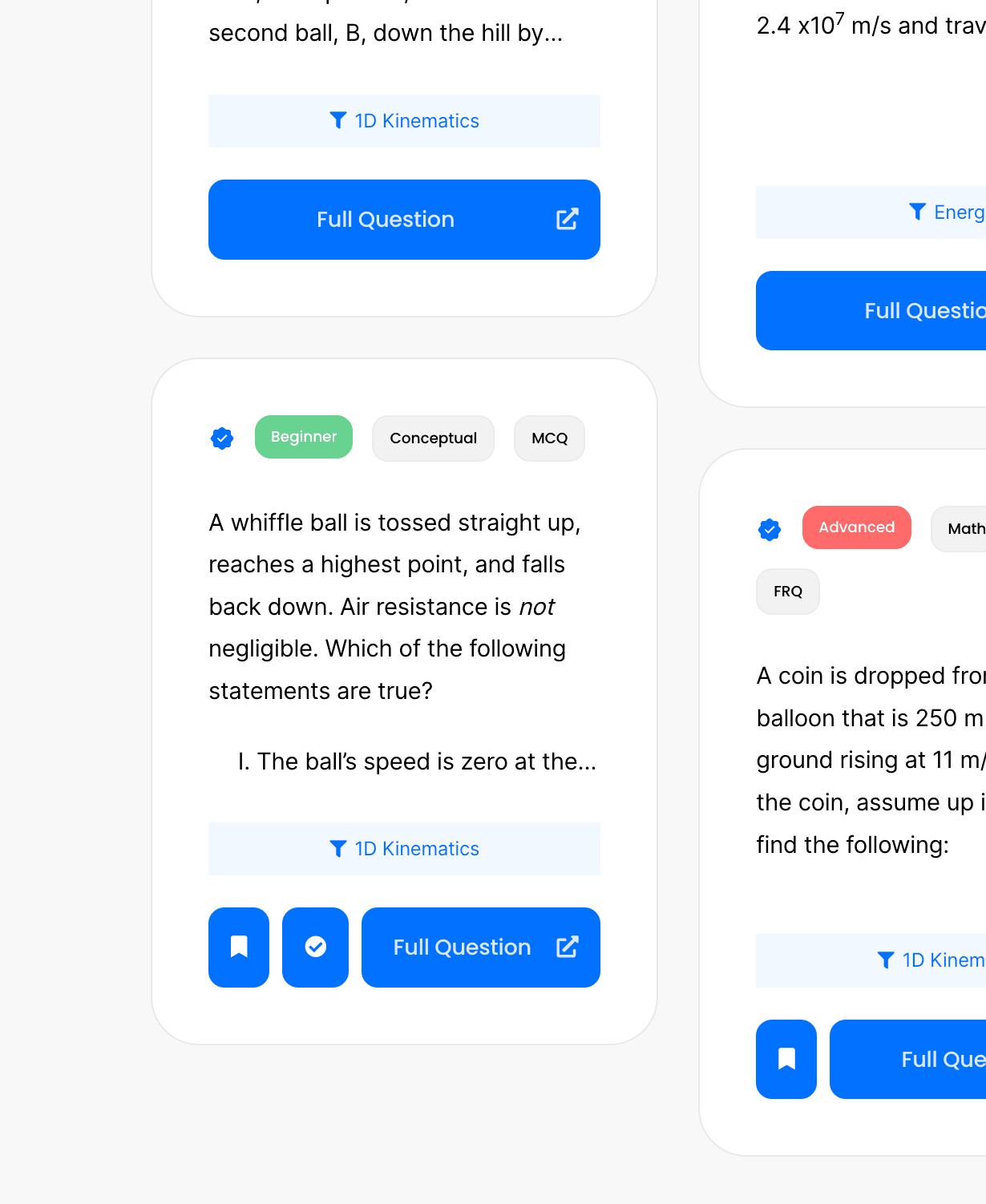
Click the check or bookmark button.
Now you’ll be able to see completed or bookmarked questions at a glance!
Answer keys, personalized for you.
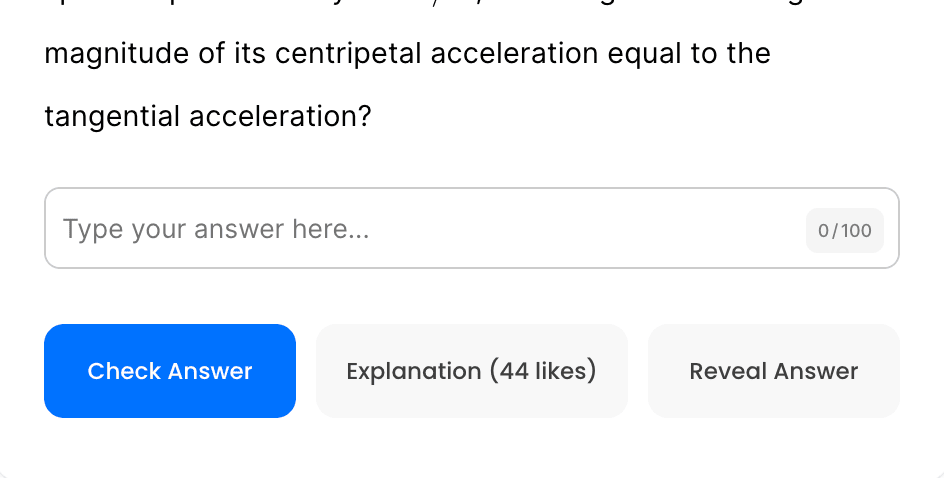
Phy will be responsible for grading your FRQs and GQs.
No more copy and pasting. Just solve and snap.
Questions for Mastery
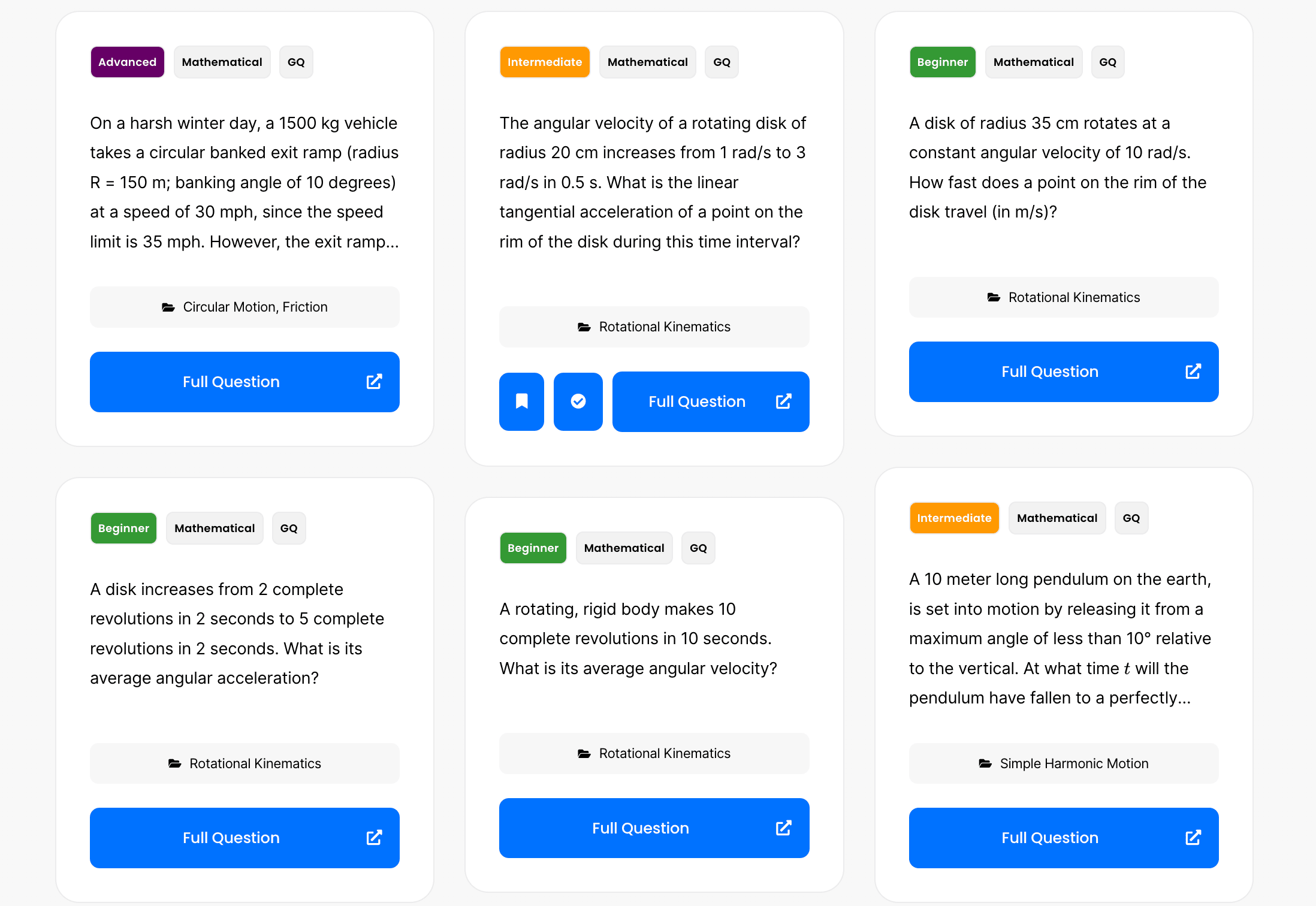
By continuing you agree to nerd-notes.com Terms of Service, Privacy Policy, and our usage of user data.